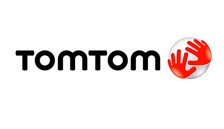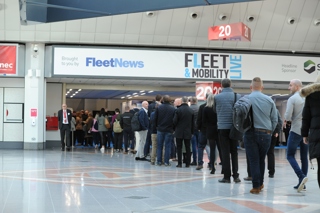Is anything happening now, or will anything be happening soon, that is likely to change the telematics landscape?
The most significant imminent developments in telematics systems will be driven by user-experience and new ways of feeding back live data from the vehicles to the fleet manager or the driver.
Integration is another emerging and prominent area, with the need to integrate telematics into many different existing systems to create seamless efficiencies.
However, the industry as a whole is also changing and there is an expectation that it will look significantly different in five to 10 years’ time.
For instance, telematics will become such a standard requirement that vehicles will come fitted with this technology ready to go.
As far as the technology is concerned, producing solutions that are a clear ‘aid’ to the driver, improve safety and productivity is very important – and how the driver interacts to receive this information is equally important – and the interface in the vehicle needs to give the driver information on jobs, destinations, journey times and so on in a format that is not distracting and is easily read.
We also expect to see the widespread adoption of ‘live’ traffic information being fed to the sat-nav to direct you around congestion, as more customers use products with a SIM card and are able to contribute to the database from where the information is drawn.
Also, road network data will improve, so telematics systems will know the speed limits on each road and will report back when a tracked vehicle exceeds the speed limit.
Products aimed at eco-driving currently use an accelerometer to give immediate feedback on driver speed, steering and braking, which then notifies the fleet management system and the fleet manager.
These will develop further so they are able to inform the driver in real-time of any driving style detrimental to eco or safe driving, so they can correct their behaviour until it becomes habitual.
This will help save fuel, cut costs and reduce vehicle damage, and being done in real-time actually saves time as there is less need to draw up examples and confront the driver in a separate meeting.
Used in conjunction with products that tap into the vehicle’s central nervous system and provide real-time data on engine revolutions, gear selection, fuel consumption and carbon footprint calculations, this provides a very powerful tool for fleet managers to be in control of their fleet and encourage greener safer driving which ultimately has a positive on the company’s bottom line.
The long-awaited mass adoption of telematics into car fleets is also anticipated to happen sooner rather than later as organisations seek to maximise efficiency and meet cost reduction, safety and green targets.
For example, a system that can monitor mileage and increase the accuracy of mileage claims can pay for itself in a relatively short period of time – this may be the entry point and companies such as TomTom have a fully portable PND with integrated SIM that performs this function very effectively.
We will also see more widespread adoption in the insurance sector of pay-as-you-go vehicle insurance because of the reduced risk associated with having a telematics system on board – and maybe telematics systems will be seen in pay-as-you-drive road taxation schemes.
This expansion will undoubtedly result in a consolidation of vendors as those without the resources to financially support this product development and technology will fall by the wayside or be swallowed by the bigger players.
Do you have a case study that shows how one of TomTom‘s customers has seen real benefits from using your system?
Established for 21 years, Serviceline maintains and repairs catering and refrigeration equipment nationwide.
More than 120 engineers provide maintenance services to a wide range of sectors including private business, local authority, healthcare, education and leisure customers.
Offering a unique technology-driven customer support package, it offers local support and national coverage from a 10,000 sq ft headquarters in Stevenage.
Serviceline is owned by the Ali Spa Group of companies, which has a £2bn turnover.
As a national service company supplying support to a large part of the catering equipment industry, Serviceline was looking for ways to improve its quality of service to customers, reduce costs, and improve efficiency.
With more than 100 vehicles on its fleet, it was becoming crucial that Serviceline obtained more knowledge about the whereabouts of the engineers and reduced fuel and mileage costs.
In addition, any new telematics system had to integrate with the organisation’s existing software that allocates forthcoming job schedules to the engineers.
Prior to the TomTom installation, engineers received schedules via voicemail, fax or email.
Initially Serviceline had trialed 15 units with another vehicle telematics organisation, which proved unsuccessful due to reliability and support issues.
Following a recommendation, it then contacted TomTom who supply another company in the group.
Serviceline implemented a TomTom solution consisting of a LINK 300 GPS tracking box with 10-second positioning, paired with a GO 7000 navigation device with two-way messaging and LIVE services including TomTom’s unique HD traffic.
The system was implemented in December 2009 and has resulted in a number of benefits for the company’s engineers, office-based staff and customers.
One of the key priorities for Serviceline was to have a navigation system with live traffic information and by doing so it has significantly reduced mileage figures and extended the life of the vehicles, which in turn has reduced the lease cost.
The solution has slashed the time taken by Serviceline’s office-based staff to allocate and send jobs to the engineers.
The TomTom solution enables staff to view the drivers’ destinations, estimated arrival times, and live traffic information, which benefits the customer by providing accurate ETAs on demand. This is imperative in the catering industry, where timing is paramount.
Mark Hensley, commercial director at Serviceline, said: “We are now able to communicate job schedules using an automated system, which has saved time and money, and our drivers know well in advance where they need to be instead of awaiting a fax or email.
"The TomTom system was implemented as part of an organisation-wide initiative to save costs.
"As a result we were able to achieve a consistent 18% reduction in fuel usage at a time when fuel costs rose by up to 30%.
"The key areas contributing to this saving are better routing, traffic avoidance and accurate private mileage claims.
"Our engineers are delighted with the system, as they avoid traffic delays and have accurate location details.
"It is a fantastic compliment that we have embraced the solution and it has become such an intrinsic part of our business. We know we have picked the right solution.”
The AFE Group has been so impressed with the roll-out at Serviceline that it is now talking to TomTom about implementing the solution across its other companies.


















Login to comment
Comments
No comments have been made yet.